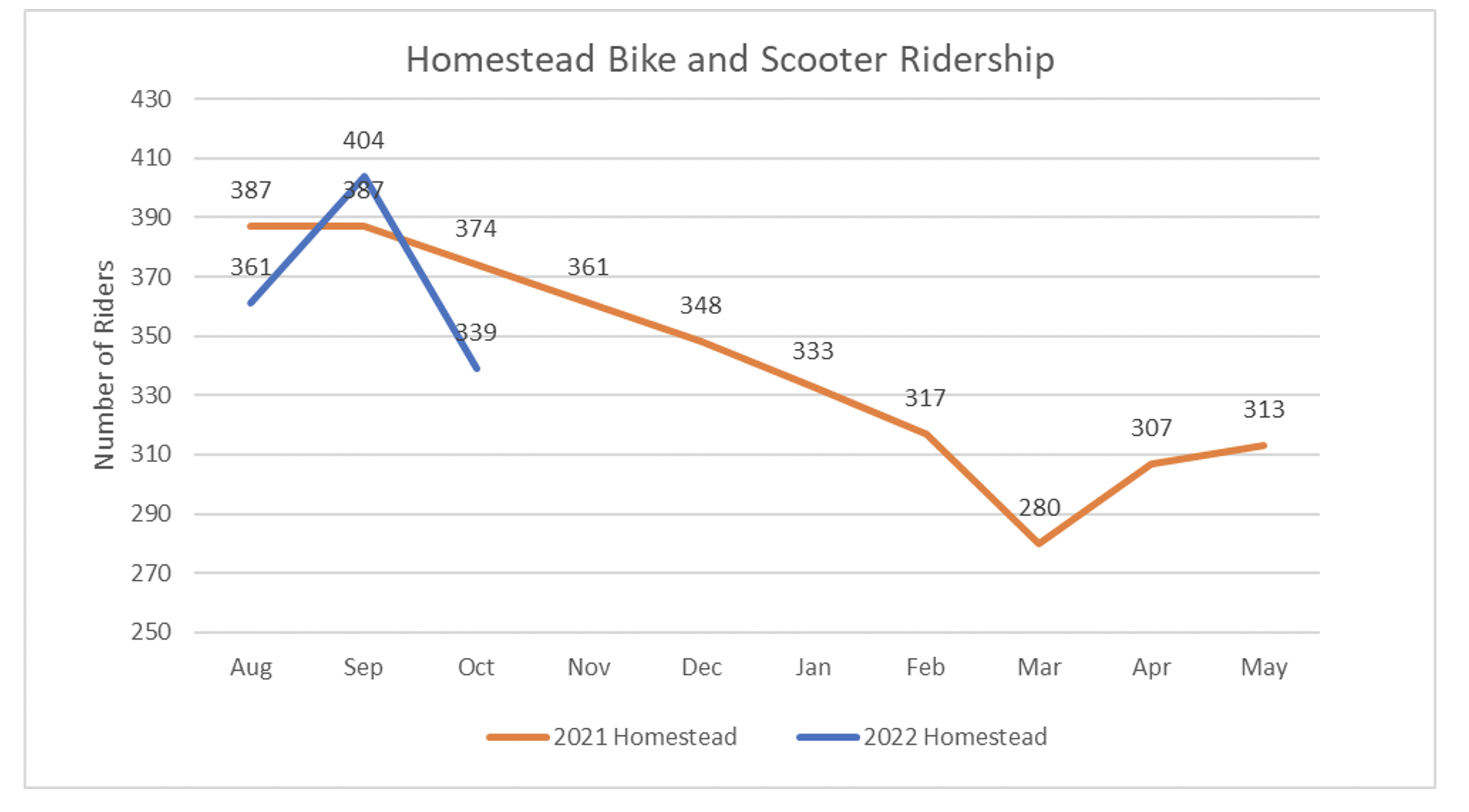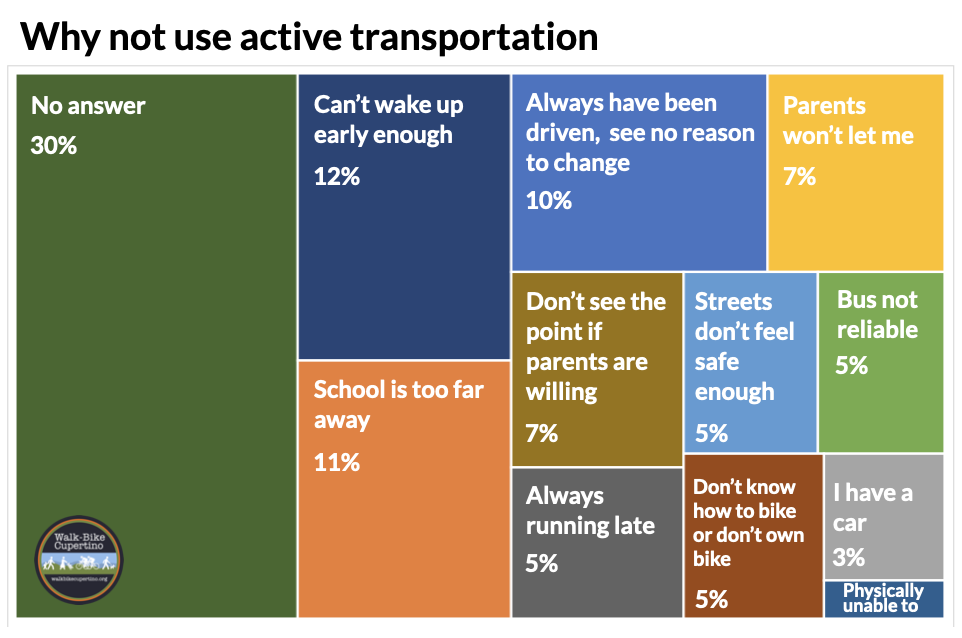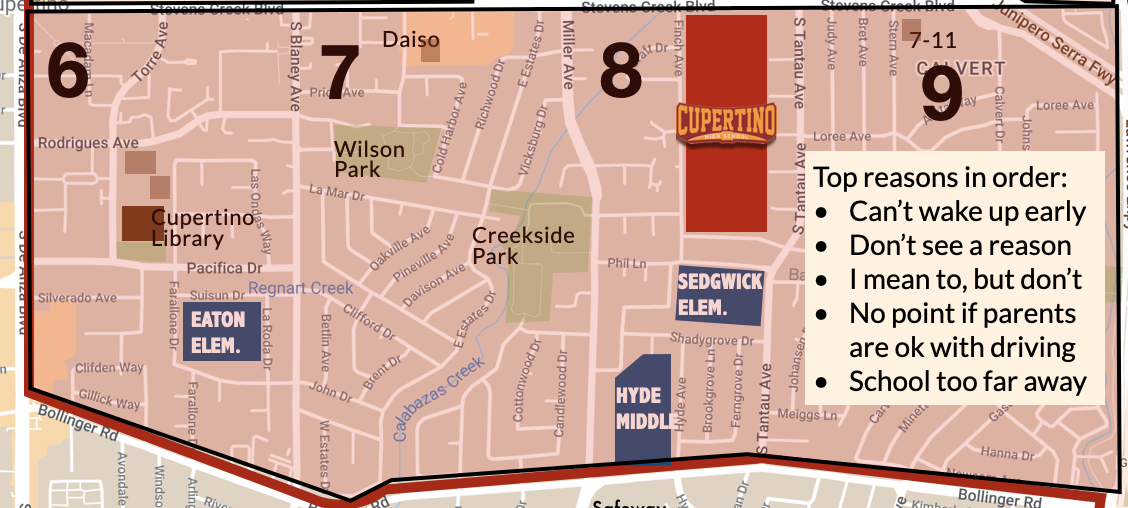Based on bike, skateboard and scooter counts, the good news is that students from four of the five local FUHSD High Schools are all biking more this fall than in 2021. The increases are significant: it’s a jump of over 10% more students. (To see a comparison of each school compared to one another, click here.)
Concerning Trends
There are, however, a couple worrying trends. One is that over the school year, the number of students biking, skateboarding or scootering to school drops during the rainy months, and then does not recover to the same levels as the fall once spring arrives. (See the box to learn about how to equip your child for rainy weather, so they can keep biking through the winter.)
This can be seen easily in the 2021 Homestead graph below, where the trend is downward throughout the year. It does rebound in the spring, but never to the same levels as in the previous fall.
Don’t let the rain stop your child from biking to school. Click here to learn about great gear to stay dry while biking!
A second concern is that our high schools still have a very low rate of students traveling to school in active ways. The percentages of students biking to school ranges from 6% at Fremont High to 18% at Homestead High, per the Walk-Bike Cupertino bike counts. Check out the detail for all the schools by clicking here. Cupertino Safe Routes to School data shows 14% overall of FUHSD students bike to school (see data from Cupertino Safe Routes here) and a total of 55% of high school student being driven to school. Other districts have much higher percentages of biking to school than the FUHSD district.
Palo Alto, for example, has a 63% biking and walking rate with only 24% of students being driven or driving. (See data here.)
Why students don’t bike or walk to school
Safety has always been a concern of parents (see this 2017 survey by Walk-Bike Cupertino on safety issues on the way to school.) In the spring of this year, Cupertino High School surveyed their students as to why they don’t walk or bike to school. Though this is data only for one high school, the results are still telling.
The top reasons for students living close by (less than a mile away with no major streets to cross) are: “Can’t wake up early”, “Don’t see a reason”, and “I mean to, but don’t”. Many students just didn’t bother to say why they didn’t, they just don’t.
It’s clear that much of the reason that students don’t bike to school is because they don’t feel like it or aren’t encouraged to by parents. Even those students that live very close to school and within easy walking or biking distance often choose not to use active transportation to get to school.
Biking and Walking to School is good for students
Studies show that kids who walk or bike to school have better concentration, and enjoy greater school success.
Biking and walking to school have great community benefits as well, including personal health benefits, decreasing traffic, improving our environment, and more. See this article for more information.
As a community, let’s support getting students to school safely and actively!




